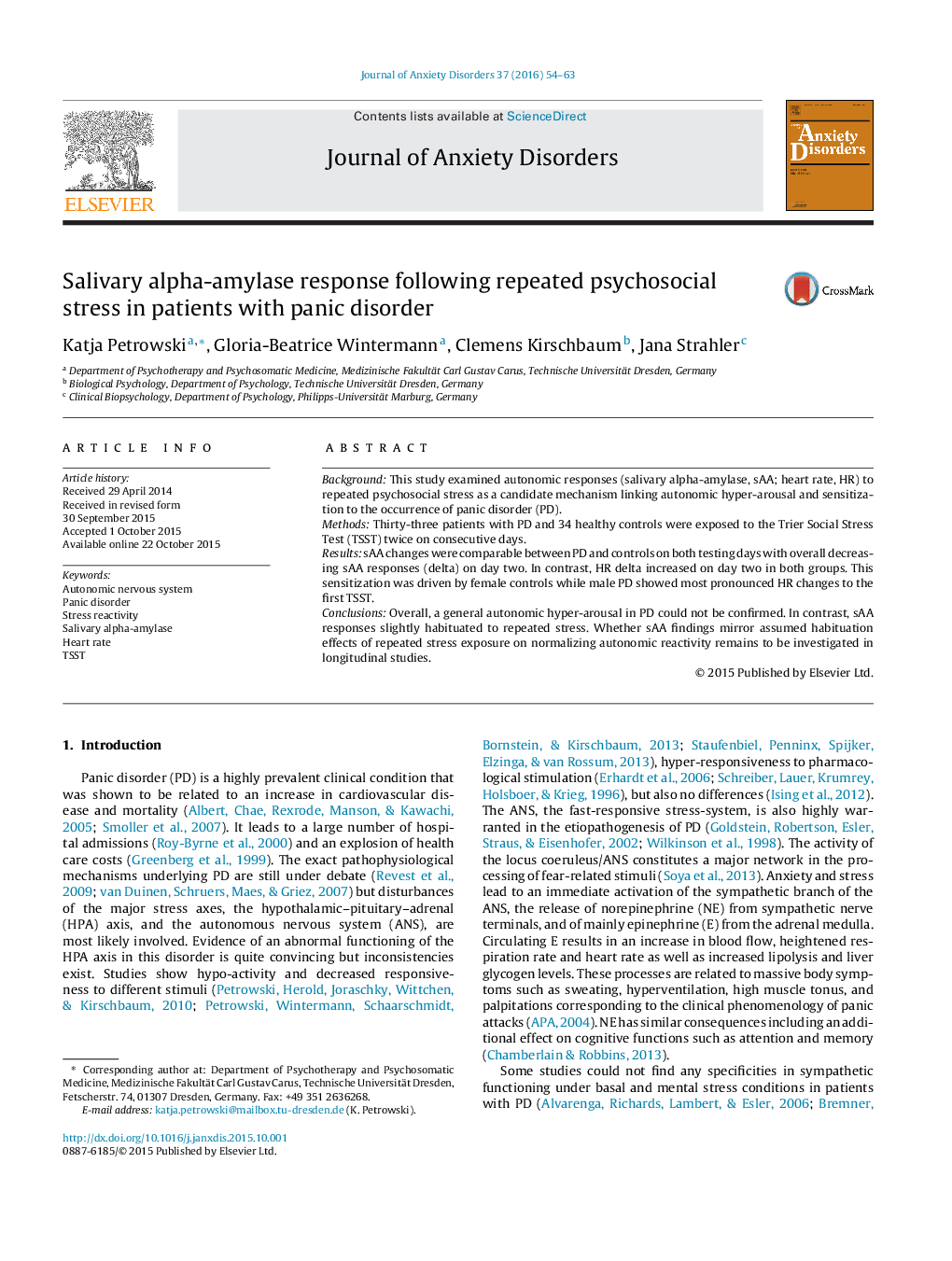| Article ID | Journal | Published Year | Pages | File Type |
|---|---|---|---|---|
| 909225 | Journal of Anxiety Disorders | 2016 | 10 Pages |
•Autonomic sensitization to repeated TSST’s was explored in panic disorder (PD).•sAA changes were comparable between PD and controls on both testing days.•Male PD showed most pronounced HR changes to the first TSST (p = 0.036).•sAA, but not HR responses (delta), habituated to repeated stress in both groups.•Men showed lowest sAA responses on day 2 (p = 0.027), male PD in particular (n.s.).•Especially in female controls, HR responses where higher on day 2 (p = 0.026).•HR and sAA responses correlated positively.
BackgroundThis study examined autonomic responses (salivary alpha-amylase, sAA; heart rate, HR) to repeated psychosocial stress as a candidate mechanism linking autonomic hyper-arousal and sensitization to the occurrence of panic disorder (PD).MethodsThirty-three patients with PD and 34 healthy controls were exposed to the Trier Social Stress Test (TSST) twice on consecutive days.ResultssAA changes were comparable between PD and controls on both testing days with overall decreasing sAA responses (delta) on day two. In contrast, HR delta increased on day two in both groups. This sensitization was driven by female controls while male PD showed most pronounced HR changes to the first TSST.ConclusionsOverall, a general autonomic hyper-arousal in PD could not be confirmed. In contrast, sAA responses slightly habituated to repeated stress. Whether sAA findings mirror assumed habituation effects of repeated stress exposure on normalizing autonomic reactivity remains to be investigated in longitudinal studies.
Graphical abstractFigure optionsDownload full-size imageDownload as PowerPoint slide
